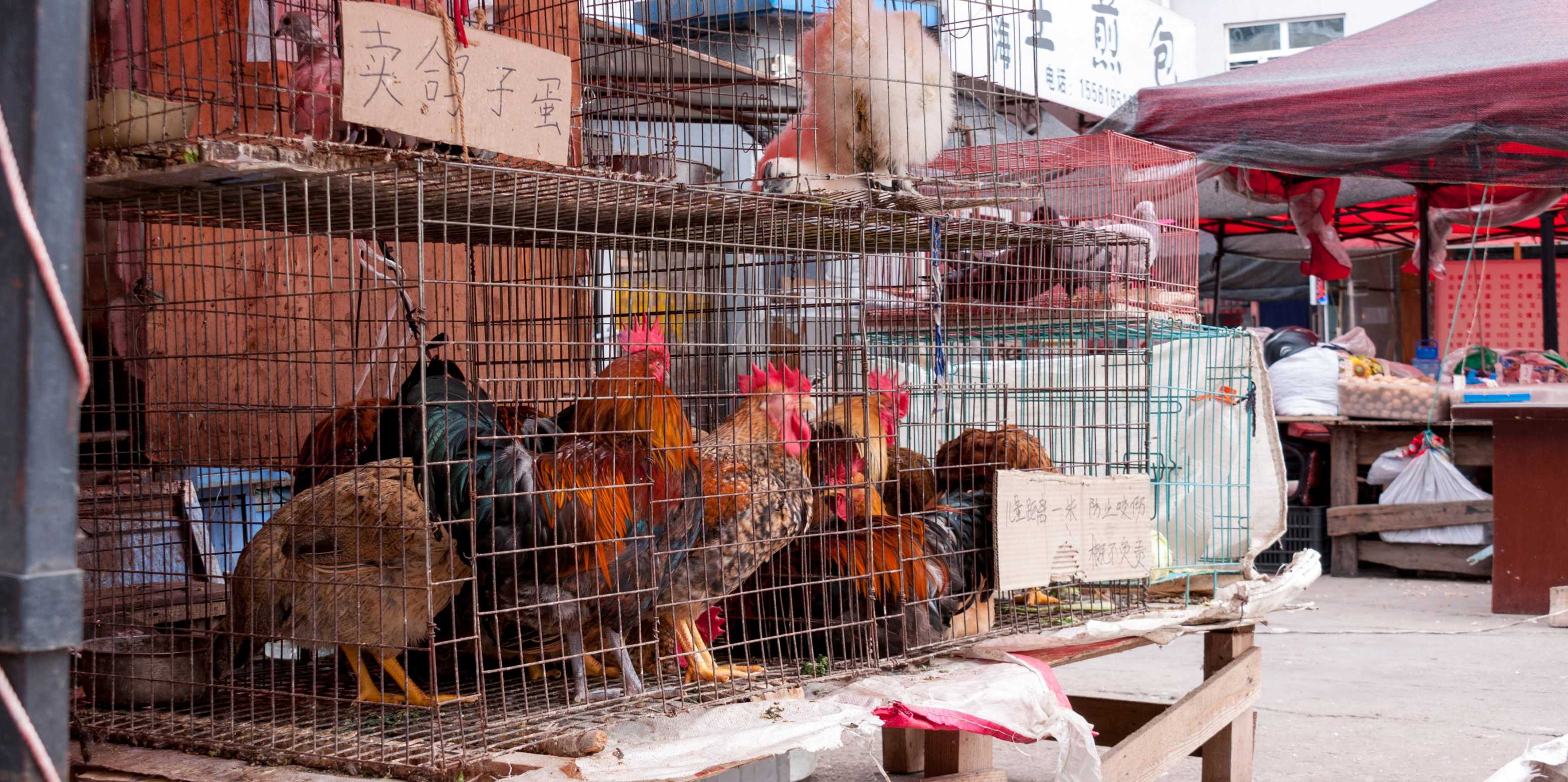What previous bird flu outbreaks teach us
Researchers at ETH Zurich have analysed the bird flu epidemic caused by the H7N9 strain that affected China from 2013 to 2017. New phylogenetic trees will help to improve monitoring of future bird flu epidemics.

There are many different bird flu viruses. Besides the subtype H5N1, which has been spreading in the European wild bird population for several years and poses a threat to local poultry farms, there is also, for instance, subtype H7N9. This one caused poultry outbreaks in China from 2013 to 2017 and also infected humans who had close contact with live poultry. A total of 616 people in China were reported to have died from an infection with this subtype.
Experts are tracking how the different bird flu viruses are developing. With both H7N9 and other subtypes, there is a risk that mutations in their genome could allow for human-to-human transmission, raising the threat of a pandemic.
That’s why Claire Guinat, a former postdoc in ETH Professor Tanja Stadler’s group, studied the waves of the H7N9 epidemic in China between 2013 and 2017. This involved the researchers analysing published gene sequences of H7N9 viruses isolated from infected humans and poultry to build phylogenetic trees. The researchers from the Department of Biosystems Science and Engineering at ETH Zurich in Basel aimed to understand how the disease spread at poultry markets, and to draw conclusions that would help improve future efforts to monitor and control bird flu outbreaks.
Live poultry markets play a key role
In China, chickens and other poultry are often sold alive at markets. It has long been known that these markets play a key role in bird flu transmission – both from animal to animal and from animals to humans.

“It is important not to wait until bird flu cases are discovered, because then the virus has probably already been circulating for quite some time.”Tanja Stadler
With their phylogenetic analyses, the researchers at ETH Zurich have confirmed that the H7N9 virus was likely circulating in poultry for several months before being discovered in both poultry markets and humans. Their results also suggest that more poultry markets may have been affected than previously believed. Especially between 2013 and 2016, when the virus caused few symptoms in poultry, making it challenging to detect outbreaks. As the virus mutated and caused more severe symptoms in poultry from 2016, it became easier to recognise affected poultry.
“Our findings highlight the importance of not waiting until bird flu cases are discovered, because then the virus has probably already been circulating for quite some time,” Stadler says. “Instead, it would be wise to continuously monitor the health of the animals in their stalls and at the live poultry markets.”
Still on alert
The researchers primarily focused on analysing viruses from the metropolitan regions of Shanghai and Guangdong. Their findings suggest that the virus had widely circulated in poultry markets in these areas. While there is a theoretical possibility that the virus is introduced repeatedly between regions due to transporting infected birds, the phylogenetic trees indicated no clear pattern of such a regular virus introduction between regions. This indicates that the live poultry markets in urban regions played a key role in the disease’s incidence. “Given the severity of epidemics like this, it is crucial for every affected region to take immediate action to halt the virus spread,” says Guinat, the lead author of the study, who now works at the Institut national de recherche pour l’agriculture, l’alimentation et l’environnement (INRAE) in Toulouse.
The H7N9 epidemic was restricted to China; the country began to vaccinate poultry against this pathogen in 2017. Together with improved hygiene measures in poultry markets, the authorities were able to mitigate the epidemic in animals and greatly reduce cases of transmission to humans. But isolated outbreaks of the disease do still occur. The last human death resulting from complications of an H7N9 infection was in 2019. Because virus genomes mutate constantly, there remains a risk of the H7N9 virus becoming a threat to humans again. Public health experts thus remain on alert.
Reference
Guinat C, Tang H, Yang Q, Valenzuela Agui C, Vaughan TG , Scire J, Yu H, Wei W, Zhiyuan C, Ducatez MF, Stadler T: Bayesian phylodynamics reveals the transmission dynamics of avian influenza A(H7N9) virus at the human–live bird market interface in China. PNAS, 17. April 2023, doi: external page 10.1073/pnas.2215610120


Comments
No comments yet